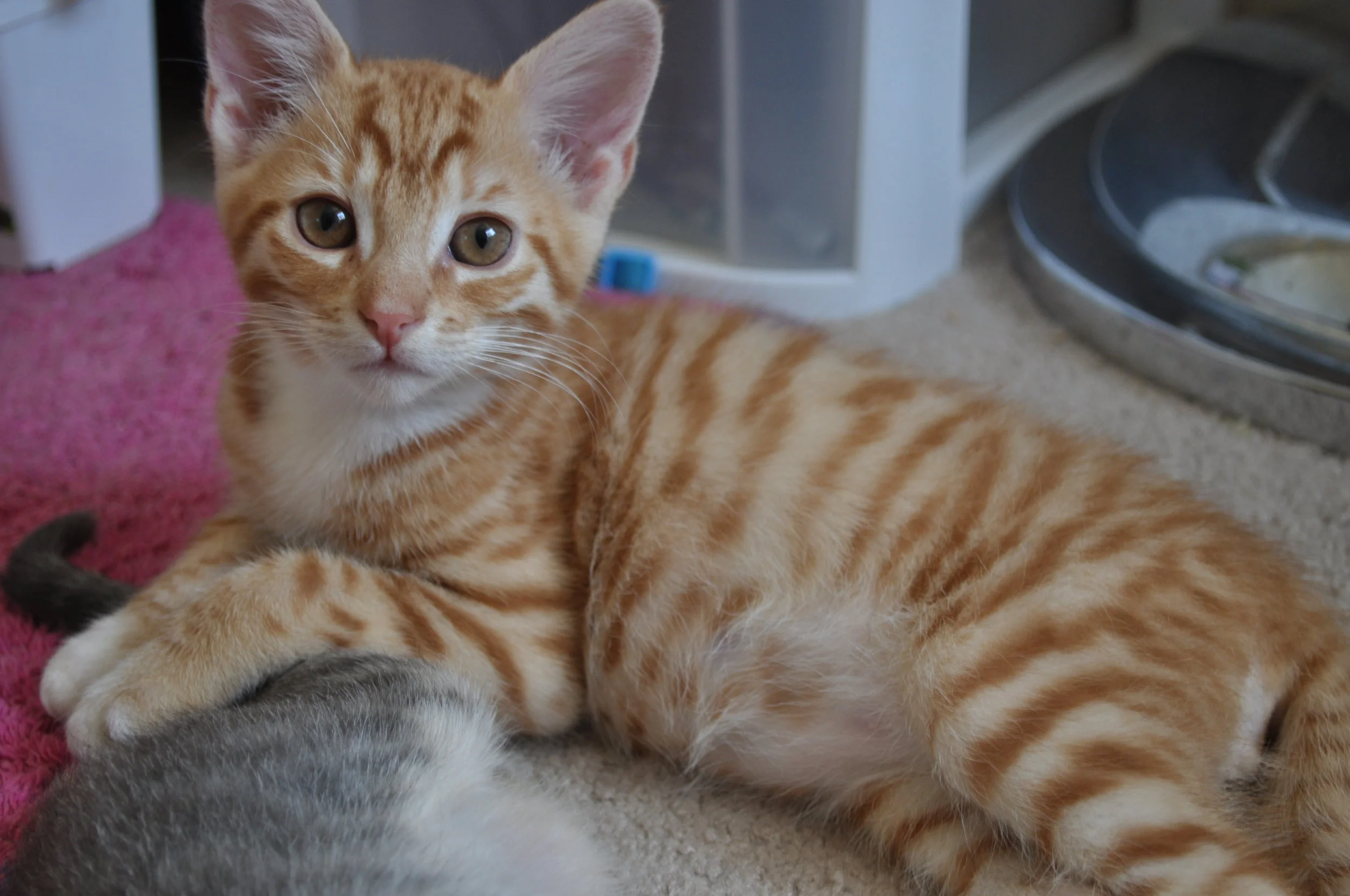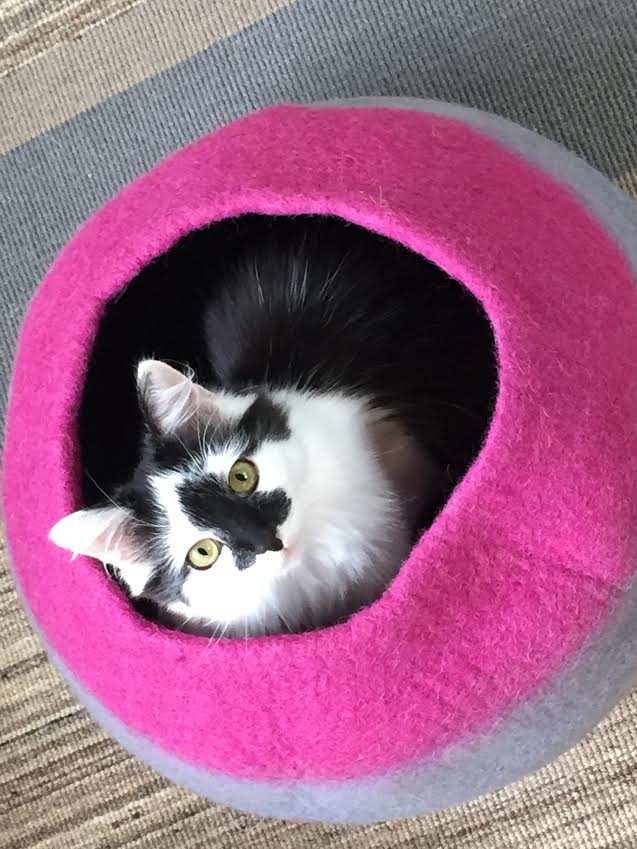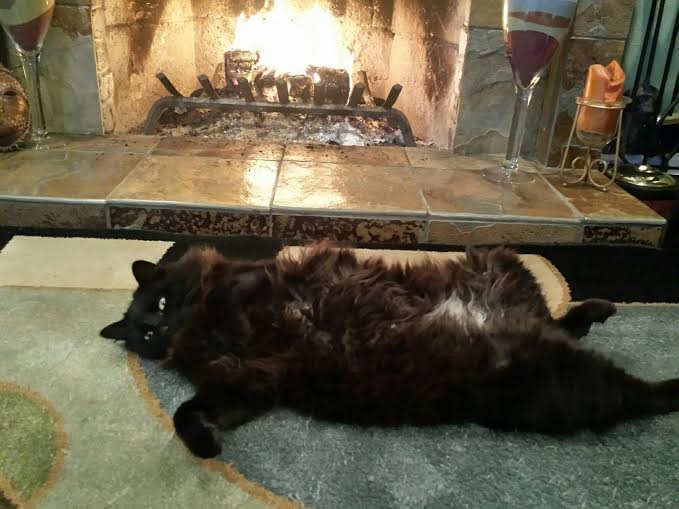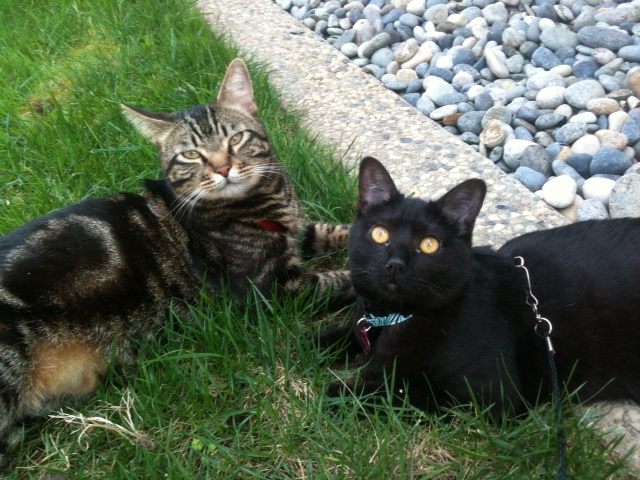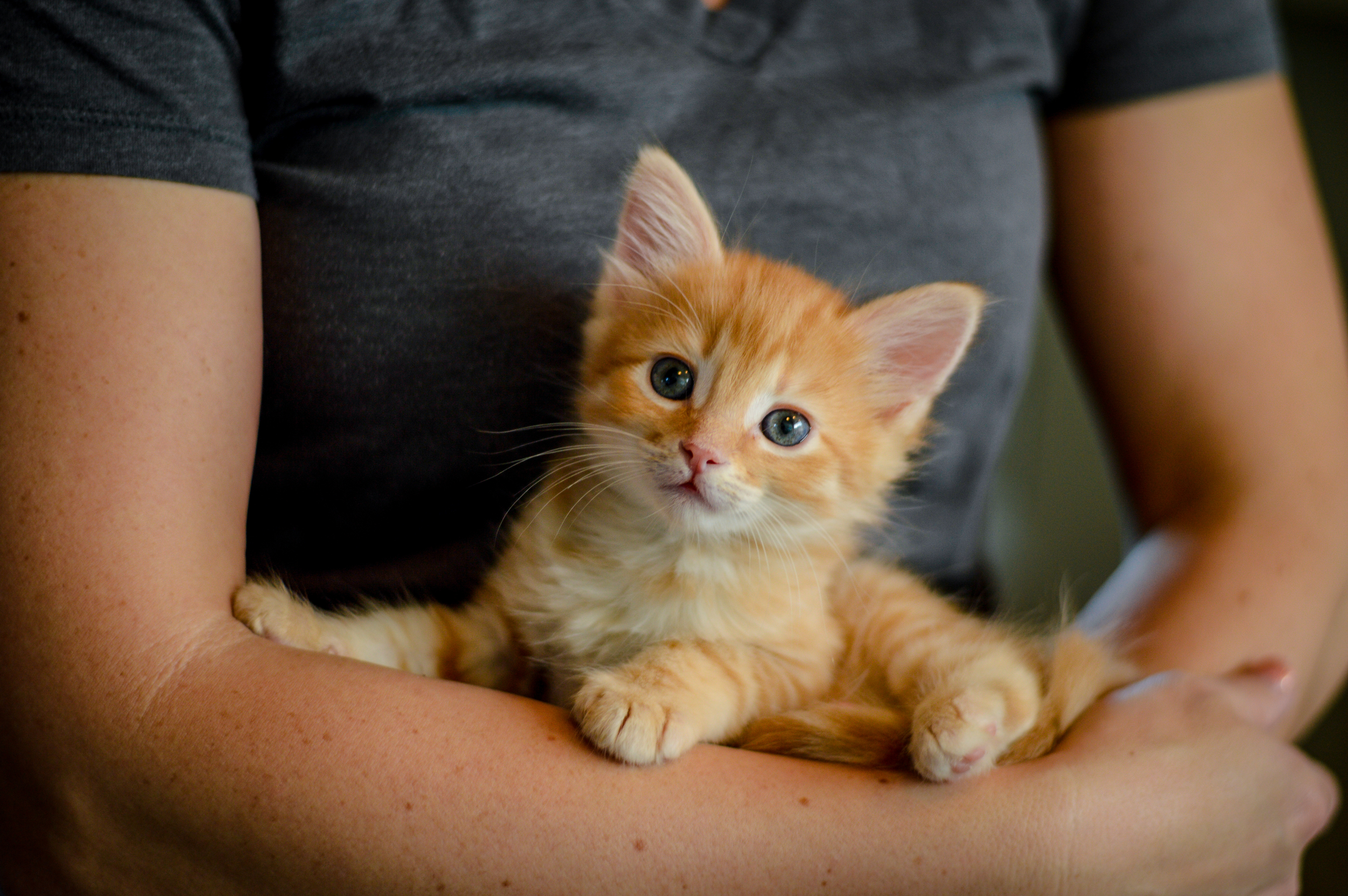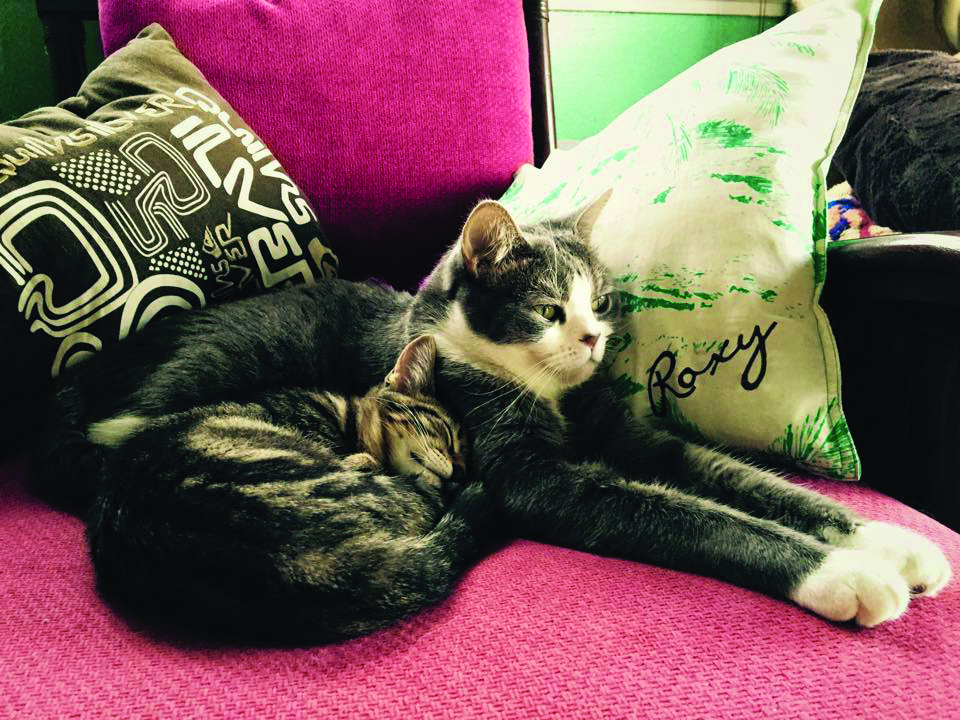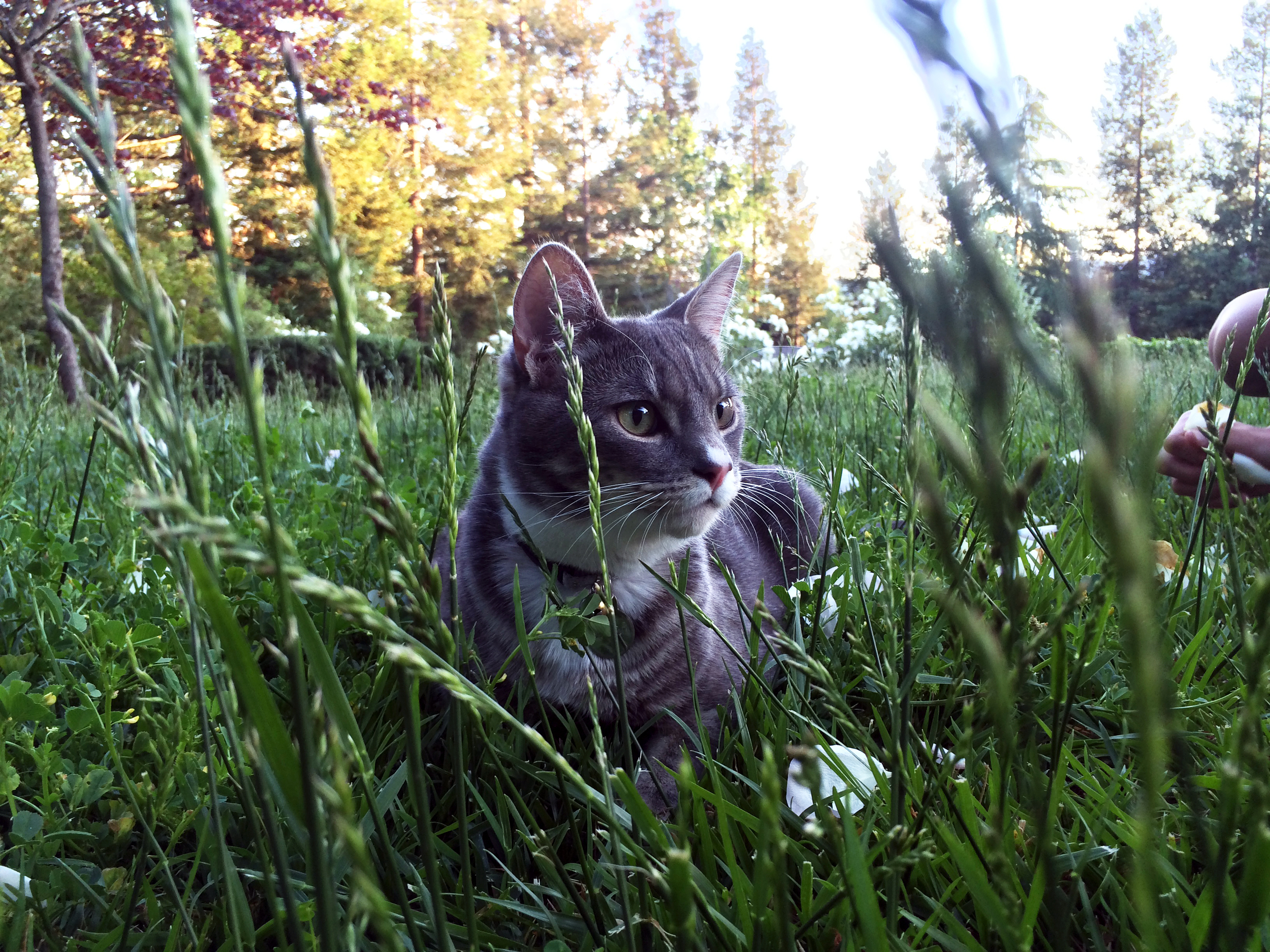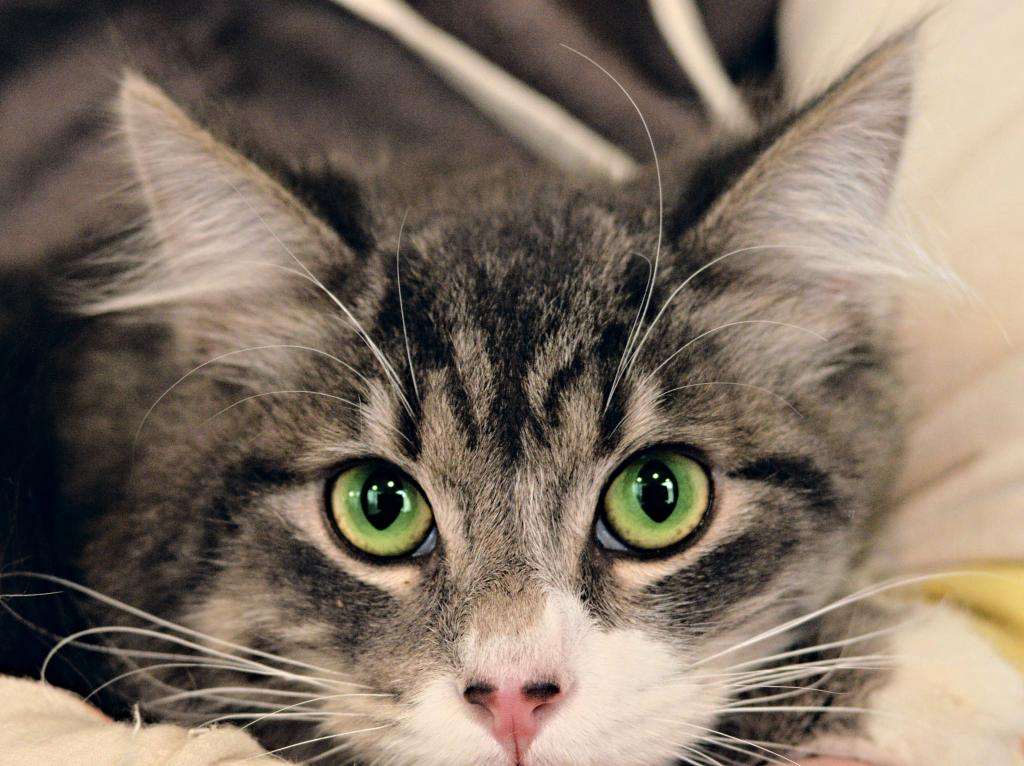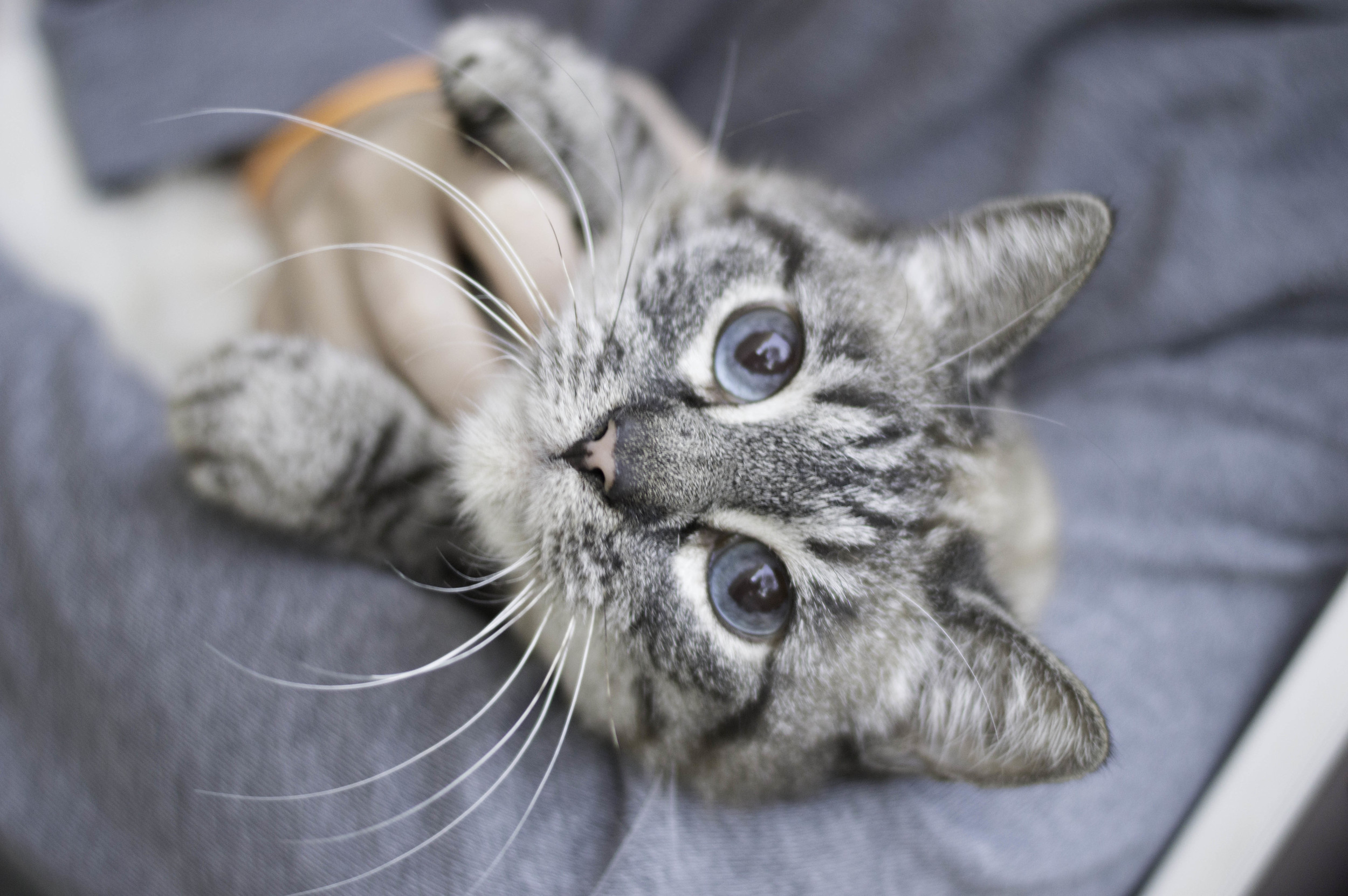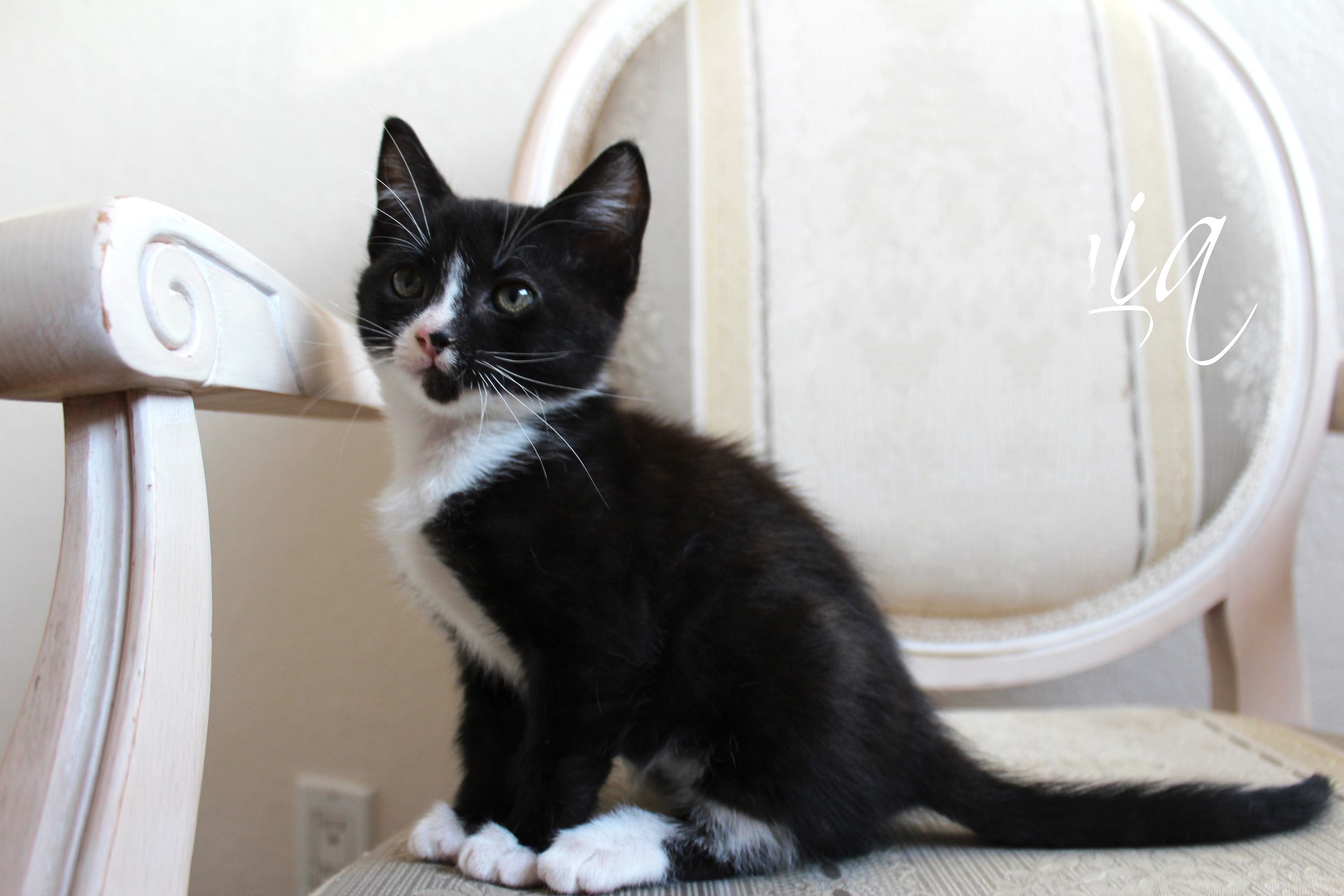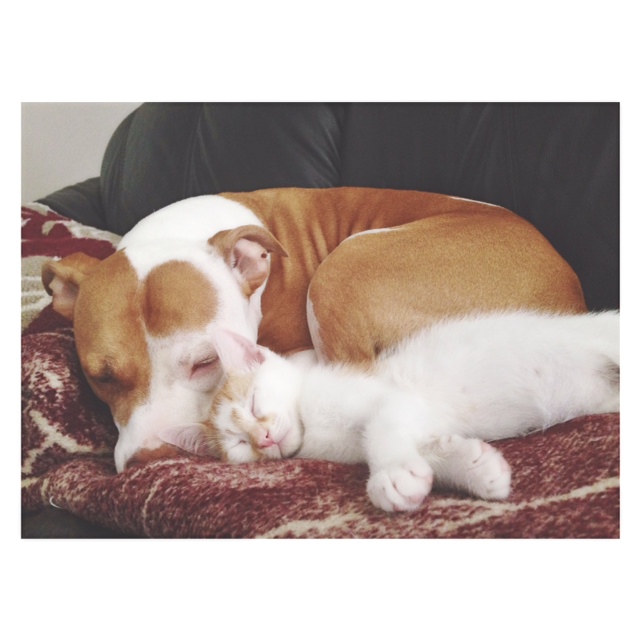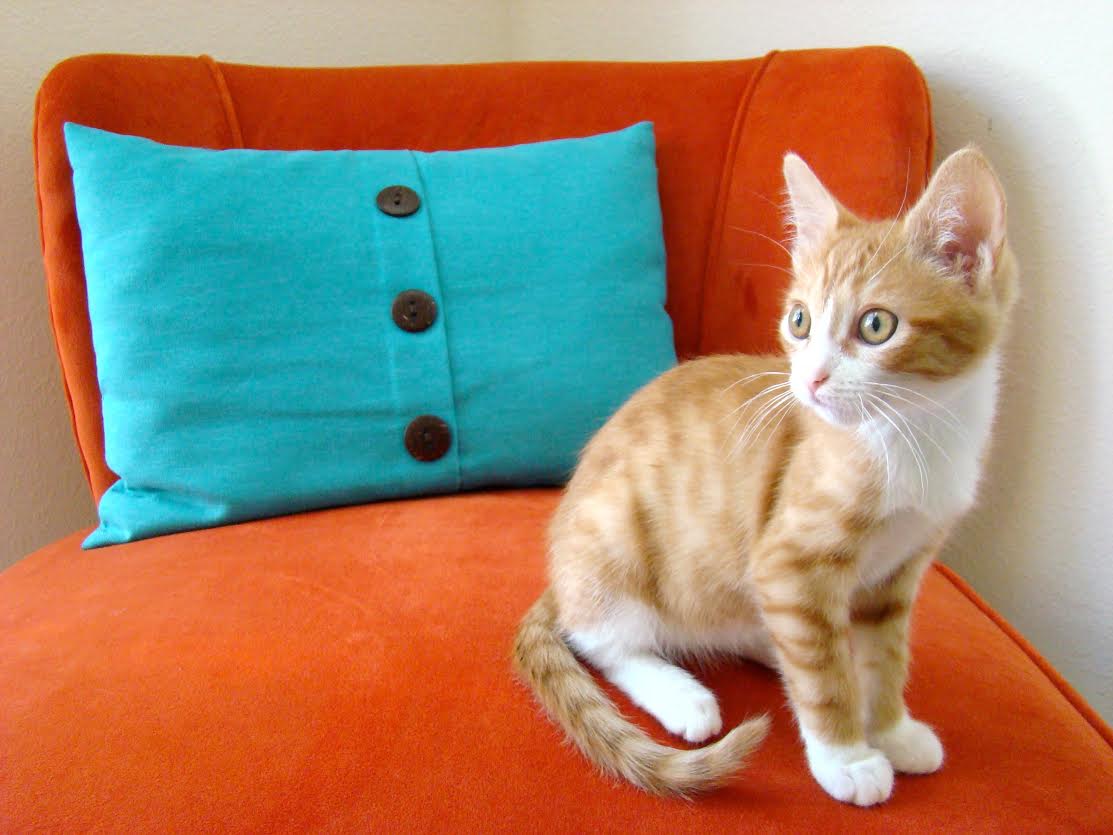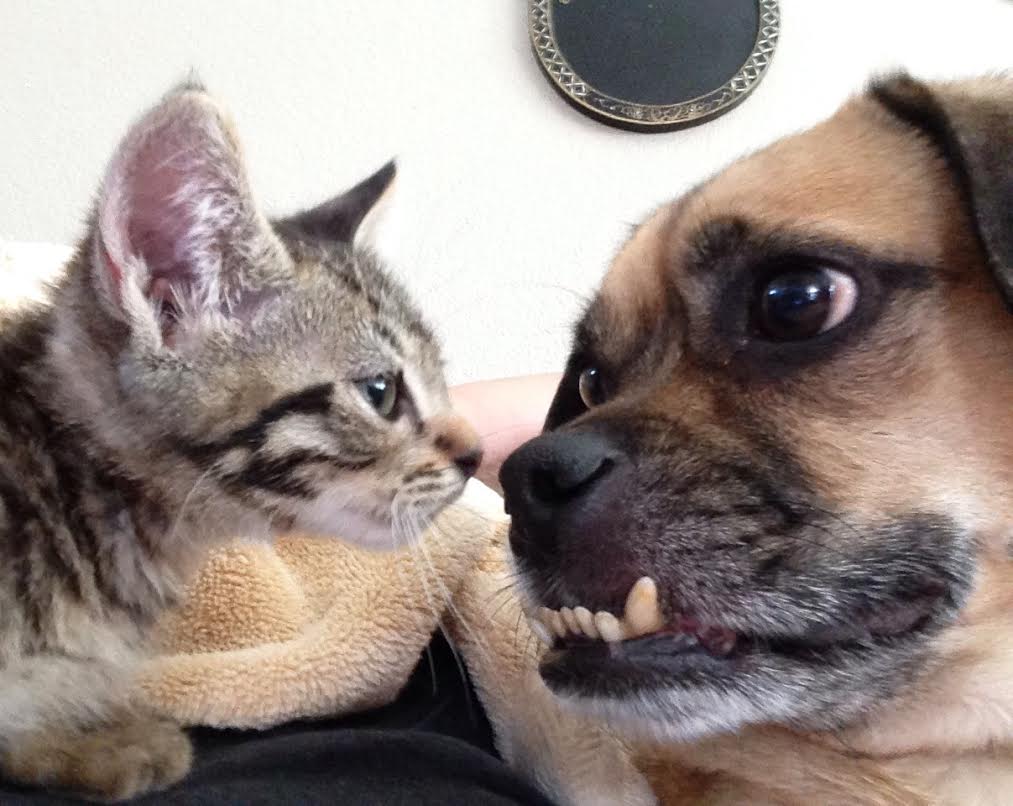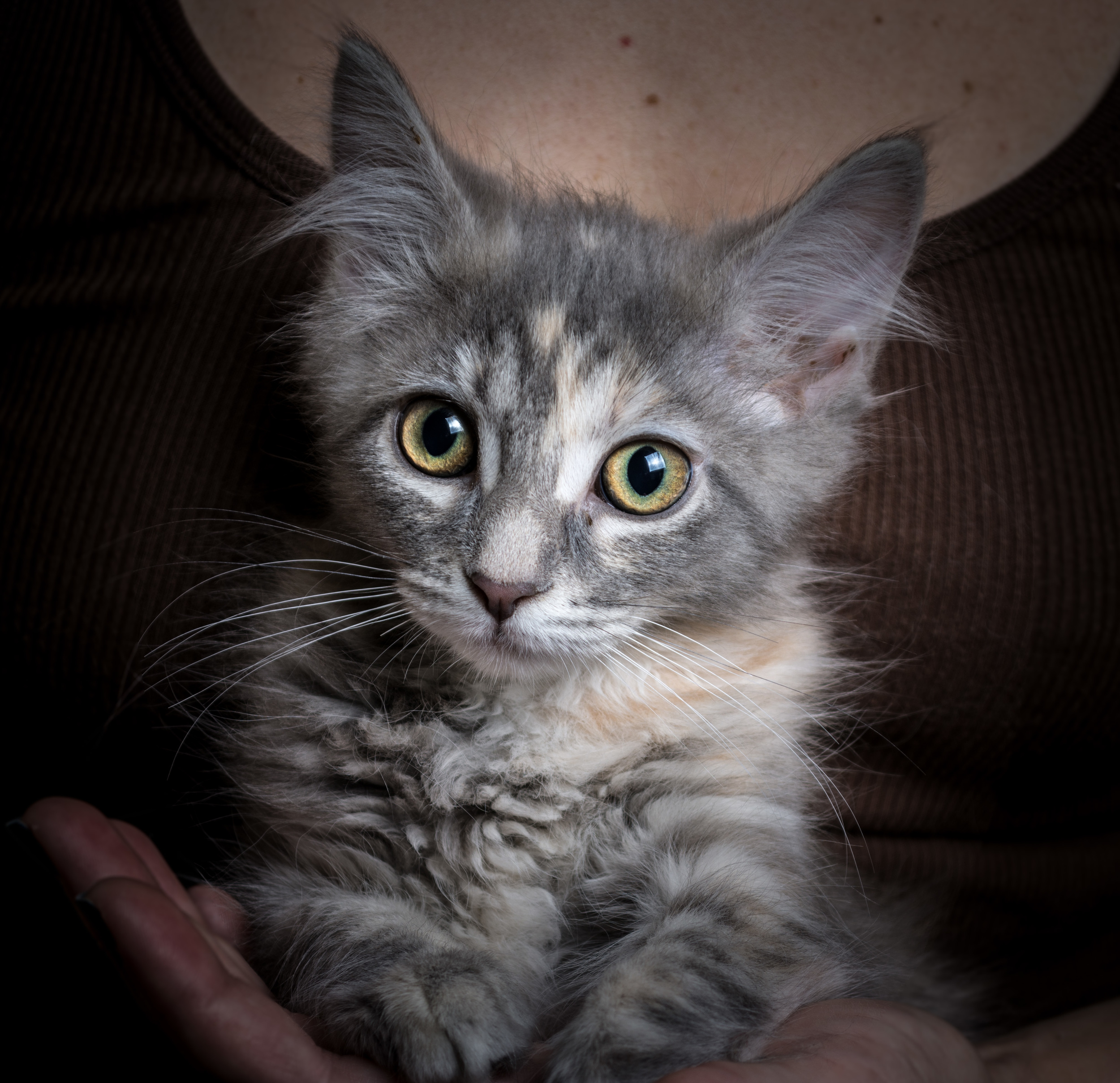THE PAWS AND THE CLAWS
Training your cat to scratch, how to trim their nails, and the truth about declawing
Most people acquire a cat for companionship, love and to provide a home for a homeless animal. However, when people and cats live together, some natural feline behaviors can translate to frustration for cat guardians...such as the new couch being shredded or a child getting scratched by a scared kitten. Some owners turn to a surgical procedure called declawing to “solve” these problems. The SF/SPCA Cat Behavior Department believes that declawing can have major complications, both medical and behavioral. We urge all cat owners to look beyond a “quick fix” solution that can have devastating consequences- and we are committed to helping owners solve problem behaviors using methods that are effective and humane.
Why Do Cats Have Claws? And Why Do They Scratch?
First of all, it is important to understand a little bit about the physiology of the paw and claws. The paws are the basic framework of the anatomy of cats’ legs. In their entirety, including the toes, they support the muscles, tendons and entire body, and help the cat balance. The footpads contain scent glands, and the claws contain blood vessels and nerves. Cats’ claws are used in a variety of ways. Scratching is a normal and natural activity for cats, which they perform for many reasons:
Stretching and Exercise: Perhaps most importantly for a cat - scratching is a satisfying way for them to stretch and tone their back and shoulder muscles – it feels good!
Grooming: Cats need their claws to “get to that itch”!
Play and Hunting: Cats use their claws to “hook” onto a toy and toss it around, demonstrating their predatory nature. Their claws are also an important tool in catching and killing their prey.
Climbing and Running: Cats love to perch in high places and climb. Their claws help them climb – be it up a tree or to the top of a cat condo. The claws provide traction for running as well.
Kneading: When a cat rhythmically moves her paws on people, clothing or bedding, she is “re-enacting” the times of nursing her mom as a kitten. This is generally a sign of contentment! Clawing is often involved in kneading.
Marking Territory: Scratching leaves a visual cue to other cats that this location has already been claimed by another feline. The foot pads also contain scent glands that leave a message – “this is mine!”
Defense: Cats use their claws to scratch when fighting with other cats or animals, to protect themselves. They may use their claws with humans when frightened or irritated.
Communication: Many cats will gently extend their claws as a warning that they are annoyed by the current interaction (such as, “please let me down now!”).
Shedding Claws: Claws have layers of skin similar to the layers of an onion. The claw itself is an extension of the cat’s skin. The outer layer of the claw tissue is continually growing and must be removed to accommodate new growth. When a cat digs into the scratching surface of their choice, you will see the old nail coverings they have loosened nearby.
Stress Relief: Cats often resort to scratching as a “displacement” behavior. These behaviors occur when an animal is stressed or conflicted, for example. It is often observed that a cat will choose to scratch shortly after an incident that has stressed it out – such as a negative interaction with another animal or after being punished. This behavior is often wrongfully interpreted as the cat being “spiteful” or “getting back at the owner.”
What Is Declawing, And What Are The Potential Consequences Of Declawing?
Many cat guardians (and members of society at large) are not fully aware or informed as to what declaw surgery is. Often the surgery is misrepresented as “just removing the claws” or as some variation on nail trimming.
In actuality declawing is the cutting and removing of the first joint (the toes) of a cat’s paw. Basically, it is a series of amputations. Because claws are retractable and set into the connected joint, it is a complicated procedure. Since declawing destroys the natural integrity of the paw, it can impact many of the earlier- mentioned functions. The procedure is done under general anesthesia, which always carries risks, depending on the health of the animal. After declaw surgery, a cat’s paws are bandaged tightly. Most cats are held for a few days at the veterinary office after surgery – not necessarily because of health risks, but because of the visible pain and discomfort. Many veterinary technicians can relay stories of cats who have thrashed their bandages off in pain and left trails of blood in their cages after a declaw surgery.
Declawed cats will undergo at least 7-10 days of convalescence. Older cats may take even longer to fully heal. Cats must be restricted from jumping or exercising during the healing process and there may be problems with bleeding or infection. When not performed correctly, declawing carries the risk of partial claw regrowth, or of dead bone fragmenting (known as a “sequestrum”) after surgery. In both cases, there will be more pain and corrective surgery will be required. When the wounds have healed, there is still a possibility of complications – such as balance impairment, “phantom pain” and muscular weakness in the shoulders, back and legs. After being declawed, a cat must alter its posture to carry weight on the rear of his pads instead of on the toes, which is how a paw-intact cat would walk. A trained eye can often spot a
declawed cat from far away because of the unnatural appearance of the paws and stance of the cat.
Declawed cats must be kept indoors only after surgery. Claws are the primary means of self-defense for cats. If a declawed cat gets outside, it is extremely vulnerable, having lost some of its ability to climb and hang on to things, as well as having lost its major line of defense against predators. Even if you plan to keep your cat inside, you should be aware that accidents do happen, and many indoor cats do get out sometime in their lifetime.
There are also potential behavioral consequences: A declawed cat often acts very defensive in new situations, presumably because she has an awareness that her defenses are weakened. When threatened, some resort to biting, which can be more dangerous than getting scratched.
Some declawed cats develop litter box problems or other anxiety-related disorders, most likely due to insecurity with their ability to defend themselves. This is often an issue not immediately after the surgery, but later in life at times of transition and stress, such as when moving, or the addition of a new family member. It may, in other words, make the cat less adaptable to change. Without the ability to mark with their paws, these cats may define their territory by urine or
spray-marking, or even using feces to mark. Other cats develop an aversion to the litter box directly after surgery. There are two possible reasons for this: one is that the pain in the paws is more acute when in the litter box, and the cat learns to associate this pain with the box itself. The other possibility is that the need to use a pellet litter or shredded newspaper after surgery is unsuitable to the cat, accustomed to using a soft, sandy substrate. Unfortunately, there has not been enough research as to the behavioral effects of declawing on cats. Many veterinarians do not see the repercussions of declaw surgery, as they often only see the “success stories.” However, talk to anyone who works in an animal shelter and they will tell you that many declawed cats end up there (and often euthanized) due to behavior problems that arose after surgery.
Certainly there are declawed cats that do not exhibit major behavioral problems; all cats are individual and the fact that some can deal with losing their claws should not be considered a justification for the surgery. Since the procedure is irreversible, it is a very big risk to take.
A final note on this procedure: in many countries, including England, Turkey, Germany, Brazil, Norway, Sweden, Ireland, Switzerland, Italy and Australia, Declawing is not only NOT performed, it is illegal. It is classified as “mutilation” and considered inhumane. Something to think about!
Why Do People Declaw Their Cats?
The most common reasons people declaw cats is to stop the cats from destroying carpets and furniture. Sometimes, it is because their cat scratches them in an aggressive manner. But given the fact that these problems can be solved in other, less painful ways, we think the main cause may be a lack of knowledge regarding how to train a cat!
What Are The Alternatives To Declawing?
Given the reasons for declawing, it needs to be said that both furniture scratching and aggressive behavior can be addressed and solved, when pet guardians are willing to take the steps necessary to modify both the behavior of their cat and their own behavior!
Training a Cat to Use a Scratching Post
Furniture scratching is often referred to as “destructive.” However, scratching is a normal behavior for cats, not something they do to be belligerent! They need to keep their nails in good condition and they also need to mark territory to feel secure.
You may not currently care whether the cat uses your furniture or carpet as a scratching post, but you might care someday when the cat can’t tell the difference between that old sofa and the brand new one.
What works is to have an ideal scratching post which satisfies this urge better than the furniture.
This means that it will be:
Sturdy (meaning it won’t tip over when pulled on)
tall enough to stretch entire body up against it
in a prominent place in the house
of a material that the cats like to scratch on
Preventing “bad” behaviors from the beginning is easier than fixing them once a habit is established, so make sure you start your cat or kitten out right. Ideally, there will be multiple scratching surfaces/textures for the cat to choose from, in various locations in the house. Remember that cats like to scratch to stretch – and they usually want to stretch before and after eating, as well as after napping, so keep that in mind when choosing locations for scratching materials. Don’t forget that they want to mark their territory – so the post might need to be in a prominent location – many people make the mistake of putting the post in a dark corner or a seldom-used room – not too enticing for kitty.
As for scratching posts – you’ll have many choices on the market – so how to choose? One with a variety of materials and surfaces would be great. Most cats prefer sisal rope, though some cats like carpet or wood better. What they want is something they can really dig into with their nails so they can remove those outer layers. Something that also provides a horizontal surface to scratch is great, in case your cat has that preference (you’ll notice that some cats like to scratch rugs or the top of the couch).
If you get a kitty condo, you can fulfill many of your cat’s needs at once – they’re good for households with shy cats or with dogs or kids – a great getaway spot for kitty. They create more territory, which is helpful in a small home, or a multi-cat household. They also provide your cat with fun, mental stimulation and exercise. You can build a scratching post or cat tree yourself – there are many websites with instructions on how to do this, or just ask us for a copy of our
handout on building a cat tree.
You want to avoid an inadequate scratching post, because it will be a waste of your money and it will lead you to frustration! Some examples of bad posts are ones that are too small/short, provide only fluffy carpet as a scratching surface (cats want something they can really dig their nails into, which a loosely woven carpet may not provide), or are too wobbly to pull on and stretch fully. The scratchers that hang over the doorknob are ineffective and may even be
dangerous, because their instability may cause a sudden movement while a cat is stretching that could lead to injury. So shop wisely and ask the store where you purchase your post or tree if they have an exchange or refund policy.
Many cats also enjoy the cardboard scratchers. They are inexpensive, so you could get a few to have throughout the home. A post is still recommended, but the cardboard scratchers are a great way to provide some extra scratching areas for your cat, especially if they like horizontal scratching. Some are even built at an angle which many cats find satisfying. If possible, make them more stable – one clever cat lover built a heavy wooden box just the size to fit a cardboard
scratcher in it, so it wouldn’t move around on the floor while being used. Some Velcro could achieve the same results.
Remember that praise gets you a lot further than correction or punishment. Make the scratching post appealing and try to entice your cat to use it by utilizing toys, treats or catnip to “lure” the cat into a standing position by the post. You can also scratch your own nails on the post to make a sound that cats may respond to in kind. Often they naturally figure out what the post is for – and then it is time for praise! Offer your cat a treat, some affection and play to reinforce the appropriate behavior. Many well-intentioned cat owners attempt to show the cat how to use a post by carrying them to the scratching post and holding their paws and moving them in a scratching motion. We DO NOT recommend this technique to train your cat! Many cats become uncomfortable being handled in this manner, and fear they will be moved against their will if they
go near the post…and then they have learned to avoid their post at all costs! It’s best to allow them to discover the post on their own or using the techniques described earlier.
As we hinted at before, punishment does not work well with most cats. If you yell at your cat or use a squirt gun to deter your cat from furniture scratching, you may get immediate results (i.e. the cat will stop the behavior). The problem is that the cat will soon learn to associate these punishments with YOU, and just scratch the object of desire when you are not around.
We prefer a training method known as “remote punishment.” This means the punishment is associated with the behavior and not with the person trying to correct the behavior. If a cat has already begun to scratch a particular piece of furniture, you will need to make whatever s/he is scratching unattractive to the cat. Double-sided tape works well, which you can get in any hardware store. There is also a product made for this purpose, called “Sticky Paws.” Some people have better luck taping up pieces of tinfoil on the furniture. During the training period, this is meant to act as a deterrent from scratching – the cat goes to scratch and has an unpleasant sensation when they do so. After a few weeks of attempting to scratch the furniture, the cat usually gives up and the tape or tinfoil can be removed. Some people also have luck
using throws or furniture covers. There are also other training devices on the market such as sprays and alarms that might work when other training methods are ineffective. It is important to remember that this must be done in addition to providing your cat with an appropriate scratching implement. While the training is going on, you will want to have the scratching post nearby to encourage its use.
It is true, some cats are harder to train than others. You may have to be creative. For example, you can modify a scratching post to suit your needs. One person wrapped denim materials around a scratching post when they realized that their cat preferred scratching their jeans to any other material! There are also many cats who like to scratch while lying on their backs – these are the ones who scratch the underside of box springs and chairs. Accommodate them by tipping the cat tree or scratching post on its side and see if you can entice them to use the post in its new position. You may even have to try a brief training period in a small room with just the essentials – litter box, food, water, toys, bedding and the scratching post. By blocking off the cats access to the things you don’t want her to scratch, and limiting her scratching options to the post, she can get into the habit of using it. This is not meant to be a punishment, so your kitty will need lots of socializing, playtime and affection while she is sequestered in her training room. After a few days of using the post, she may be ready to re-enter the rooms that hold the forbidden furniture, ready to focus her scratching on her post, rather than your couch.
Nail Trimming
First of all, keep your cats’ nails trimmed short. This is easy to learn to do, and should be considered an essential part of your grooming responsibility. Have your vet show you how to do this the first time. This will prevent cats from damaging furniture (or skin!) as much if they do sneak a scratch.
Like our fingernails, cats’ claws grow continuously. Some cats may only need clipping every few months. Others may need it every few weeks. It is important to check your cat’s toenails at least once a month. It is easier to clip often, taking less of the claw than to wait too long and have to deal with little daggers. For us to trim our own nails regularly is usually a fairly simple, stress-free procedure. Doing the same for our cats can be more difficult.
Cats who stay indoors may need their nails trimmed more regularly than cats who go outside— even if they use their scratching posts often. Scratching on a post helps to remove the “dead” parts of the nail, thus making the nail thinner and sharper. Nails that have not been trimmed for a long time may grow in a circular shape causing the tips to grow into the cat’s paw pad, or they may become too thick which sometimes happens with older or less active cats. In this case the sheath doesn’t get removed so the claw becomes too wide and starts growing into the cat’s pad. This can be extremely painful and may require medical treatment and minor surgery. It can also lead to infection. This is why regular trimming is essential.
Some Important Tips
Handling your cat’s paws regularly, when he’s relaxed will allow him to become used to the feeling of having his paws touched. He may then be less upset at claw clipping time.
Ask someone to help you; it is much easier than trying to hold a struggling cat and wield clippers simultaneously. A “scruff-hold” can be used to restrain the cat. This involves firmly, yet gently restraining the cat by holding his or her scruff and supporting the rest of the cat’s body. While one person holds, the helper can do the actual clipping. Before you attempt it on your own, have your veterinarian demonstrate nail trimming for you.
Choose a time when your cat is calm—naptime may be the best. It is possible that you may only be able to do one toe at a time, especially at first.
Get appropriate clippers for cats’ claws – do not use human nail clippers or scissors!
How To Do It
Check the cat’s paws for dirt; although they usually keep their own feet clean, you will want to be able to see the claw clearly. You can extend the cat’s nail by picking up the cat’s foot and gently applying a little pressure on the top and bottom of the toe just behind the nail.
Make sure there is enough light. Having the cat’s paw between the source of light and yourself makes it much easier to see where you need to cut.
Keep the clippers perpendicular to the nail. Look for the “quick” in the cat’s nail. Notice how far into the nail the quick extends. (The quick is a vein. You can see it as the pinkish area inside the nail.)
The clipper is best placed about 1/8 inch forward of the quick. If your cat will sit still long enough, you may want to gently file the tips after cleaning.
If You Trim The Nail Too Close
Your cat may give a cry and try to pull away from you. You may observe a small bit of blood on the end of the nail. Wipe the blood away with a tissue or paper towel. Dab some super glue, corn starch or styptic powder (available in pet stores) on the tip to stop the bleeding. In the future, you will want to cut the nails a little further away from the quick.
Another alternative is Soft Paws: rubber sheaths which slip over your cat’s nails to protect your furniture without harming your cat. They can be applied at most veterinary clinics or can be purchased in a take-home kit. They last until the end of the nail breaks off, usually two to three months. We believe this to be an acceptable alternative to declawing; however, we recommend that behavioral measures be tried before you resort to this method as it can be time-consuming and it will be a repeated expense. Some cats find the nail coverings annoying, especially if not fit properly (they come in a few sizes) and may even try to bite them off.
If Your Cat Is Aggressive
Aggression in cats has many forms and as many reasons. Declawing is never a solution for aggression, because it does not deal with the cause of aggression.
If you have a playful kitten who attacks your legs as you walk by, will this behavior stop if you declaw the cat? No, because his motivation- predatory behavior- is still intact, but the kitten will now need to bite (hard) to get the same reaction he was originally aiming for.
Many people unknowingly send a message to their cat that it is okay to scratch them by playing with a cat with their hands, or wiggling their fingers as an enticement for the cat or kitten to pounce on them. When this behavior is encouraged, it can set up a lifelong aggression problem.
For this reason, it is important for humans to provide their feline companions with lots of solo
and interactive toys to redirect that energy and prevent aggressive behavior.
If you have a cat that scratches you because it doesn’t like to be petted, you can be sure that this behavior will worsen if you declaw her. You will have added to the already problematic relationship a new twist: defensive behavior because she feels vulnerable.
Cat bites can be a lot more serious than cat scratches. If you have a cat who is acting in an aggressive manner, you must work with a feline behaviorist to determine the cause and help you with the treatment. Many feline aggression problems can be solved using gentle and humane methods, teaching your cat to play with toys, and encouraging a good owner-cat
relationship by building positive associations.
Frequently Asked Questions
Doesn’t declawing keep cats in their homes? Isn’t it better than euthanasia?
The fact is that while declawing does keep some cats in their home, it’s not a guarantee. Many declawed cats end up in shelters, with new behavior problems that render them unadoptable. People often see declawing as a “quick fix” but it may cause more problems than it solved…and the cat may end up being euthanized anyway. Many cats are declawed when they are kittens, meaning they are young, sociable, and probably easily placed in another loving home where
they can keep their claws. If people want to declaw their cat, they could instead go to any animal shelter and adopt an already declawed cat. The fact remains that it is a permanent and debilitating surgery.
What about children? Or people with weakened immune systems? Won’t declawing make it safer for them to have a cat?
Cats use their claws as a warning – if they don’t have their claws, they may resort to biting when agitated. Cat bites can be deep, painful and easily infected – much more problematic than scratching. Cat guardians may have to modify their behavior to prevent being scratched – such as not encouraging their cat to chase or play with their hands and directing that energy toward appropriate toys.
Don’t indoor cats need to be declawed?
Many people assume that an indoor cat should be declawed. This is not true, as indoor cats are perfectly happy to keep their paws intact. Again, what is needed is an appropriate outlet for the need and desire to scratch.
What about laser surgery and tenectomy?
Laser surgery is being used more often to perform declaw surgeries. It is a similar technique, whereas a laser replaces a scalpel, cutting through the tissue of the paw by heating and vaporizing it. There is less initial bleeding and pain.
Tenectomy, which is the severing of tendons in the cats’ paws instead of the removal of the joint, is another surgical procedure that cat owners resort to. It renders the cat unable to scratch or flex their joints. The owner still has to clip the nails, and may have to do so more frequently than non-declawed cats, as the cat cannot sharpen or shed its claws by scratching, as the cat has little control over them. Like declawing, it can have devastating effects, and we do not recommend this procedure. Most owners do have to resort to declawing these cats as they get older due to infections developing in the paws.
Although the way declawing is performed may be changing, the fact remains that it is a permanent and irreversible surgery. The long-term negative effects still remain.
We hope this information has encouraged you to rethink a decision to declaw your cat and/or helped you modify your feline’s behavior, so that you can live happily together – with paws and claws intact!
Product Guide:
Sticky Paws - http://www.stickypaws.com/
Soft Paws - http://www.softpaws.com/
Nail Trimmers available at most pet stores or from http://drsfostersmith.com
Styptic Powder available from http://drsfostersmith.com
Pavlov’s Post - http://www.mktmkt.com/pavlovscat.html a scratching post that dispenses treats
Cosmic Catnip Alpine Scratcher available at most pets stores or from http://drsfostersmith.com
Scratching Posts - http://www.angelicalcat.com/ and http://7thheavencatfurniture.com/
Source: SF SPCA's publication: THE PAWS AND THE CLAWS updated 8/9/11

